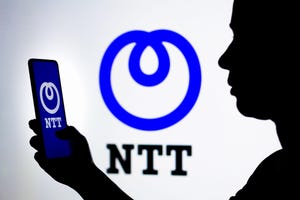Juniper's proposed purchase of Peribit reflects momentum behind WAFS and WAN optimization
April 28, 2005

News that Juniper Networks Inc. (Nasdaq: JNPR) will pay $337 million for WAN optimization vendor Peribit Networks Inc. has big implications for storage networking.
Juniper's bid is the latest of several moves to help streamline data center links to remote sites, which are multiplying like rabbits. IT managers want to avoid having to manage too much gear at those sites, or links that are too costly. At the same time, they're looking at intensive requirements for backup, replication, and disaster recovery.
Cisco Systems Inc. (Nasdaq: CSCO) aims at the problem with wide-area file services (WAFS) wares it acquired in its $82 million purchase of Actona by last year (see Cisco Completes Actona Buy and Cisco Wades Into WAFS). While Cisco offers Actona on appliances and routers through its regular partner channels instead of through storage resellers, such as EMC Corp. (NYSE: EMC), Hewlett-Packard Co. (NYSE: HPQ), Hitachi Data Systems (HDS), and IBM Corp. (NYSE: IBM), that strategy could change when Cisco releases the WAFS in blade form later this year.
Other suppliers are getting their WAFS or WAN optimization in gear. Pillar Data Systems, the richly funded NAS/SAN startup that's been lurking in the shadows for months, recently posted product details on its site. Its Axiom File Replicator is a rebranded version of the Mobilize product from Signiant Corp., a WAN acceleration software maker. Signiant also OEMs its software to EMC and Adaptec Inc. (Nasdaq: ADPT).
WAN optimizers and WAFS suppliers are also expanding their range, with a focus on streamlining specific applications (see WAFS vs WAN Optimization: No Contest). Riverbed Technology Inc. plans to offer database-specific acceleration modules in a June upgrade. And in an upcoming release, Signiant will release a package that archives data for specific projects, surrounding it with metadata that makes it protected but searchable while on a remote array or NAS.
Some suppliers maintain techniques like Peribit's that improve data delivery on WANs will play a key role in storage strategies. "You'll see a kind of application proxy server that's disk-based working in the data center alongside a network routing and security box," says Eric Wolford, SVP of marketing and business development at Riverbed. He thinks it will take years, but WAFS and WAN optimization will be key to managing data at remote sites, eliminating a lot of extra arrays, servers, and NAS gear now required.
In the meantime, suppliers in Peribit's segment are grasping their competitor's coattails to get the message across. "Accelerators could really obsolete Fibre Channel technology for disaster recovery," says Robert MacIntyre, VP of business development at Network Executive Software Inc. (NetEx). NetEx is looking to boost replication in devices like those from Intransa Inc., Maranti Networks Inc., and Sanrad Inc. as a way to expand market presence.
"This validates the market for application acceleration, WAN optimization, and WAFS," says Jay Mellman, VP of marketing for FineGround Networks. While there's a lot of disagreement on various methods, remote-site data delivery is now in focus.
— Mary Jander, Site Editor, Byte and Switch
You May Also Like









